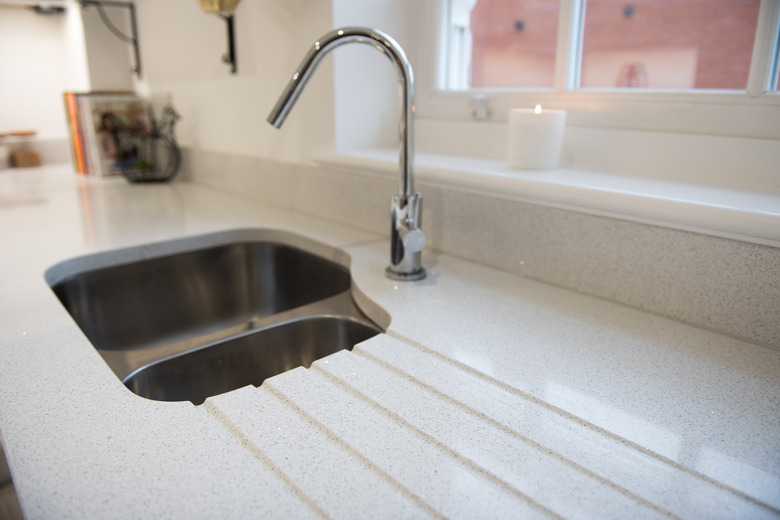How To Clean The Scum From Around A Faucet
A faucet caked with chunks of hard, white deposits at the spout and base isn't only unattractive but it can also interfere with the function of the fixture. Hard water deposits can clog the faucet as well as showerheads.
The thick layers of hardened white residue can seem like they'll need a chisel and hammer or another tool to chip it off the faucet. However, calcium deposit removal can be completed with the right tools and some patience.
Hard Water Stains Around the Faucet
Hard Water Stains Around the Faucet
The ugly white or yellowish rings around the faucet base aren't unusual. Hard water can create a calcium buildup, which is also called limescale or lime deposits. These are formed by the water that flows into the home and is fairly common in most cities. If your water has a high quantity of iron, the buildup around the spout and base of the faucet can have a yellow or rusty tinge.
Natural Cleaners for Calcium Deposits
Natural Cleaners for Calcium Deposits
Cleaning faucets with vinegar, baking soda and other natural ingredients can clean the scum that forms around the base and spouts of faucets.
White vinegar is typically enough to take down average calcium deposits on faucets and showerheads, according to Mr. Rooter. Fill a small sandwich bag with straight vinegar and place over the spout, tying it off with a rubber band to seal the bag. Let this sit for at least an hour with the spout fully emerged in the vinegar. Wipe the loosened calcium away with a sponge and rinse well.
For calcium caking the base of the faucet, soak a clean towel in vinegar and wrap it around the fixture. Leave this on for an hour or two to soften the calcium. Use a toothbrush to scrape away at the hard water deposits. You can also use a paste of baking soda and water for further cleaning and to remove lime deposits that have collected at the base of the faucet.
Commercial Cleaners for Calcium
Commercial Cleaners for Calcium
If the vinegar or other natural acids haven't removed the white scaly buildup on the faucet to your liking, you may want to reach for a commercial cleaner. Drain cleaners such as CLR can be toxic if used in a small space with little ventilation. Roto-Rooter notes that CLR drain cleaners are rather toxic and should be handled with care if you decide to use them to decalcify showerheads and faucets. Use gloves and safety goggles to ensure that the harsh chemicals don't irritate your skin or eyes as you apply it.
Open a window and keep doors to the room open if you can. For enclosed spaces, such as a small half bath, use a desk fan to circulate the air as the commercial cleaner works to soften and dissolve the calcium deposits.
Place the commercial cleaner in a baggy and wrap it around the spouts or showerhead, tying it off with a rubber band. Allow that to sit for at least 30 minutes or overnight. Use a toothbrush or other narrow brush to scrub away any remaining calcium deposits and rinse clean.
